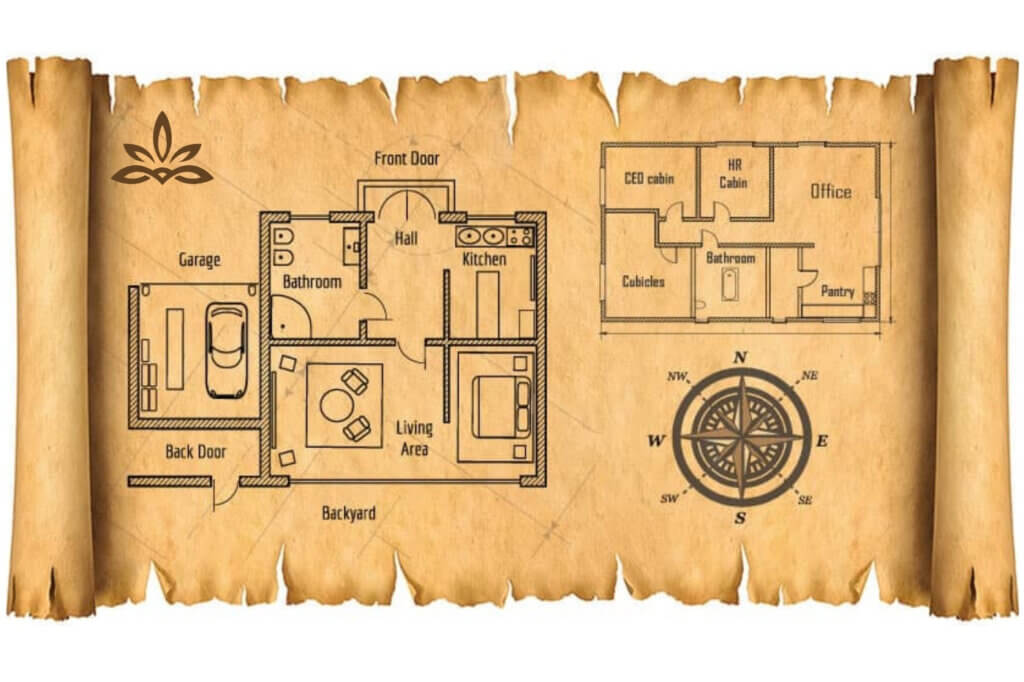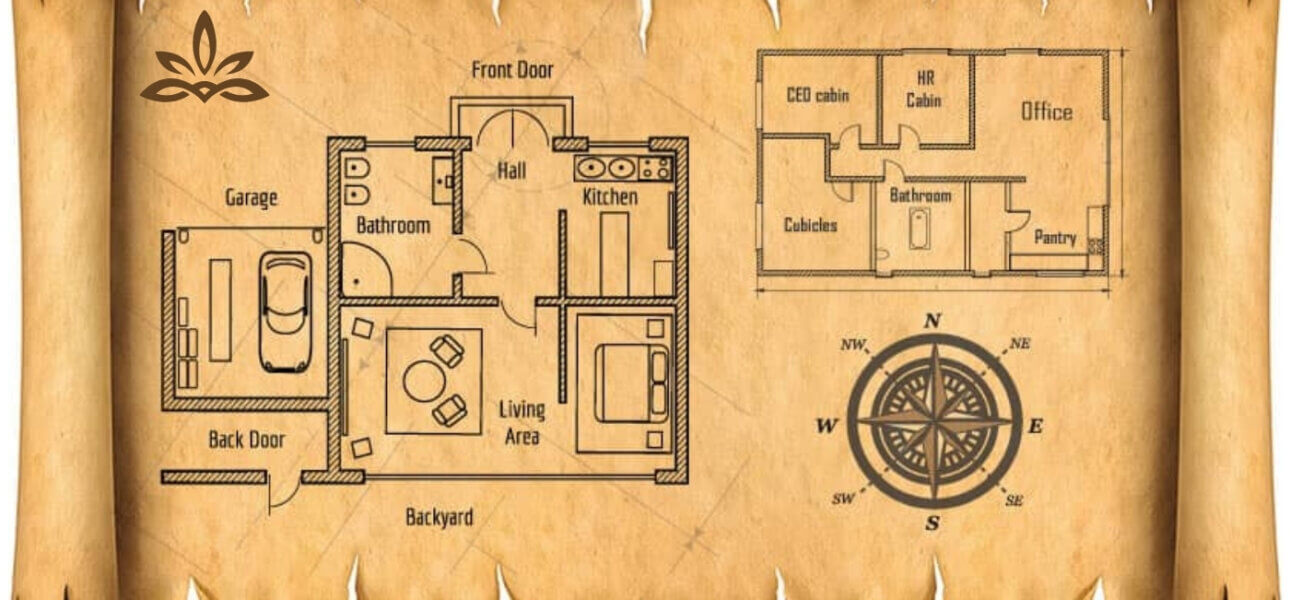Good plots become great homes only when rainwater leaves quietly and quickly. In Chennai’s Northeast monsoon, a few hours of intense rain can test your layout and your foundation. Smart drainage grading protects your plinth, your garden and your investment while keeping your neighbours happy too.

Why drainage grading matters in Chennai’s rains
Chennai and the Padappai Oragadam belt receive short but heavy bursts. Water that lingers near compound walls or on driveways weakens soil, seeps into foundations and breeds mosquitoes. Proper grading routes water away from the house, across the plot and into planned soak or street drains without crossing your living zones.
What exactly is grading
Grading is the gentle shaping of ground levels so that gravity does the work.
- Aim for a fall of 1 to 2 percent away from the building. That is 10 to 20 mm drop per metre.
- Keep finished ground level lower than plinth level by at least 300 mm so splashback never reaches walls.
- Use the driveway as a guided channel with a steady fall towards a gully trap or recharge area.
Plot planning basics for villa plots in Padappai
Start with a simple level map before you pour a single cup of cement.
- Mark highest corner and lowest corner after a quick laser or water level check.
- Position your home footprint so all four sides can slope away.
- Reserve a services strip along one side boundary for drains, pipes and rainwater recharge pits.
- Provide at least two exit paths for surface water. Never depend on just one gully.
- In clayey red soils around Padappai, combine surface slope with subsurface soak features to avoid standing sheets of water.
Street interface and layout drains
Your plot does not live alone. It must handshake with the street correctly.
- Maintain a gentle ramp from gate to road without creating a reverse bowl inside your plot.
- Keep the compound wall weep holes and kerb inlets aligned with the street drain levels.
- Leave the culvert mouth and road shoulder clear. Do not close it with paving or planters.
- If your street has a stormwater drain on the opposite side, create a small cross fall in your driveway to send water to your side gully first, then to the road through a pipe sleeve.
Vastu plus practical grading
You can respect Vastu and still drain well.
- Many follow fall towards the North or East and water storage in the North East.
- Practically, ensure the building plinth is the high point and the lawn or soak area in the North East is the low point.
- Use gentle swales to move water to a North East recharge pit if levels allow. If not, prioritise safe outflow and keep water away from foundations while keeping Vastu placements for sump and garden.
Materials and methods that work
- Turf and topsoil: Grass over a shaped subgrade slows flow and filters silt.
- Interlocking pavers with open joints: Allow micro infiltration while guiding surface runoff.
- Linear trench drains at thresholds: Slim channels at verandas and garage entries with removable grates.
- French drains: A perforated pipe wrapped in geotextile within gravel to collect subsoil water and direct it to a soak pit.
- Recharge pits and percolation wells: 1 to 1.2 metre diameter pits, filled with graded aggregate, covered with a slab for safety.
- Swales: Shallow vegetated channels that carry water gently along boundaries.
For existing plots that water log
Quick, low disruption improvements help.
- Scarify and regrade the top 100 to 150 mm of soil to recreate the 1 to 2 percent fall.
- Add a trench drain along the plinth line where water touches walls.
- Create a shallow side swale to a corner soak pit.
- Replace solid paving near gates with permeable pavers. Keep a 300 mm gravel strip away from walls.
Site checklist before you register or start building
- Stand at each corner and sight the road crown and neighbouring plot levels.
- Confirm that road is not sitting higher than your planned finished floor level.
- Check that stormwater drain entries on your street are clear and at a lower level than your gate ramp.
- Locate electric and water lines early so your swales and pits do not clash later.
- Review the layout drainage plan shared by the developer and note final road levels.
A simple grading plan for a 30 by 60 feet plot
- Keep plinth as the highest point. Finished ground around the house drops 15 mm every metre away from walls.
- Front lawn and driveway fall towards the gate. Provide a linear drain just inside the gate.
- Along the east or north boundary, run a shallow swale leading to a 1 metre diameter recharge pit in the North East corner.
- Backyard gets a French drain parallel to the rear compound wall to intercept water from neighbours.
- Connect overflow from the recharge pit to street drain through a silt trap so heavy rain has a safe exit.
Common mistakes that cause water logging
- Dead level courtyards that look neat but collect puddles
- High finished paving against compound walls that traps water inside
- Only one gully point that chokes with leaves
- Paver slope pointing back to the house due to uneven compaction
- No allowance for future road raising during relaying
Maintenance to keep your grading effective
- Clean trench drains and gully traps before the monsoon
- De-silt recharge pits annually and top up gravel layers
- Re-level sunken patches after plumbing or landscaping work
- Keep weep holes and kerb inlets open along the compound wall
Why Velammal Garden makes grading easier
At Velammal Garden, planned road levels, stormwater lines and well prepared plot platforms set you up for success. You get a ready canvas where gentle slopes, soak pits and landscape swales integrate neatly into the master layout. Explore available villa plots and infrastructure details at velammalgarden.com and plan a site visit through the contact options on velammalgarden.com
FAQs
How much slope is ideal for drainage grading on a residential plot
Aim for 1 to 2 percent fall away from the building. That is about 10 to 20 mm per metre, which is enough to move water without creating slippery gradients.
Can I follow Vastu directions and still prevent water logging
Yes. Keep the plinth as the highest point and route gentle fall towards the North or East if possible. Place the recharge pit or garden low point in the North East while ensuring water never returns to the walls.
What is better for Padappai soils, surface drains or soak pits
Use both. Surface grading quickly moves stormwater, while soak pits and French drains handle percolation in clayey zones. Combine a boundary swale with one or two recharge pits for best results.
Should the driveway be higher or lower than the house threshold
Keep the driveway lower than the threshold and install a linear drain at the porch or garage entry. The driveway itself can guide water to a gully near the gate, then to the street drain.
What if the public road sits higher than my plot
Raise the internal finished levels during platform preparation, maintain a strong plinth height and use a sump and pump or a kerbside connection with a flap valve where needed. Ensure a silt trap before any street connection.
Plan your grading once and enjoy stress free monsoons for years. If you want a walk through on a live plot with practical grading ideas, book a visit to Velammal Garden today.


